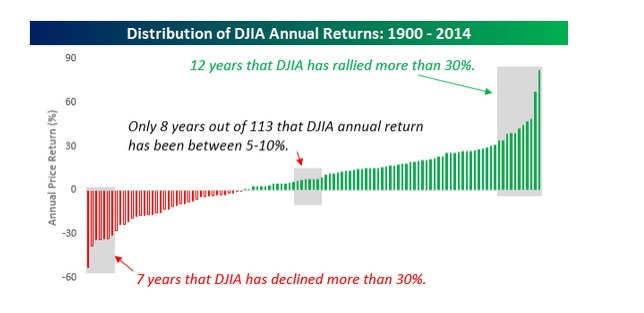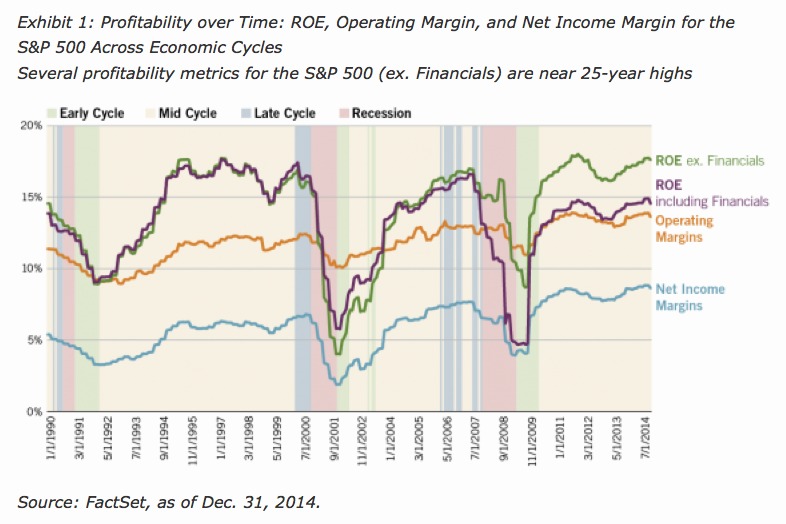As we approach the halfway mark in 2015, several trends have emerged: valuations are high, earnings have softened and interest rates are heading up.
So now is good a time as any to step back and get some historical perspective that might offer some clues on where stocks are heading the rest of this year.

Headwinds
First off, the S&P 500 Index is up about 4% as of May 18. Back at the start of the year, analysts tracked by Bloomberg forecast an 8.1% advance in the index.
That’s possible, but there are plenty of headwinds this year, including an almost certain hike in interest rates.
It’s also useful to consider that analysts have a historical bias toward bullishness.
Historical View
Consider, too, that while the market has delivered an annual average of about 7.4% since 1990 that reflects the average of some big gains and big losses over the decades.
Take a look at this chart below outlining the distribution of gains and losses in the Dow Jones Industrial Average.

Going back to 1900, there have only been eight years where the DJIA had an annual gain of between 5% and 10%, according to an analysis by Bespoke Investment Group.
Earnings Peak?
Another worrisome trend: Corporate profitability is higher than its historical average at this point in the business cycle and it’s starting to shrink.
That’s not good for share prices going forward if you think profits have peaked and there’s little upside remaining.
Morningstar analyzed the S&P 500’s profitability—as measured by net income margin, operating margin, and return on equity (ROE)—and found that it is above its mid-cycle and long-term averages.

The same holds for net profit margins across many sectors.

If there isn’t room for improved margin growth, it’s hard to justify stocks at their current high valuations.
How to Play It
In this kind of environment, the traditional buy-and-hold large-cap strategy may not be the best tactic.
Smaller companies may be worth a serious look. For one thing, the profit margins in the small-cap Russell 2000 Index are well below their mid-cycle average.

So the potential for profitable growth may be higher.
In a recent post, Steve Reitmeister at Zacks Investment Research suggests two other possible strategies.
The S&P 500 Index has locked in a trading range in recent months, roughly bounded by 2070 and 2120.
So, Reitmeister suggests keeping an eye on quality, market-leading companies and buying their shares on a dip as other investors take profits off the table.
In addition, he also suggests:
“As stocks break to new highs, then take some profits off the table. Even consider a small ETF short position or VIX play to profit from a likely market pullback. When stocks pullback 3-5%, then take profits on the shorts and VIX plays, then ratchet back up to 100% long for the next leg higher. Rinse and repeat.”
Takeaway
Since the dark days of early 2009, the US stock market has delivered one of the longest and most dynamic bull market in decades.
Yet with valuations high, earnings flagging and monetary conditions likely to tighten, investors will need to adjust their strategies in the hunt for higher returns.
Such are the challenges in the late stages of a long stock price rally.
Continued Learning: A stock market stuck on the hamster wheel




